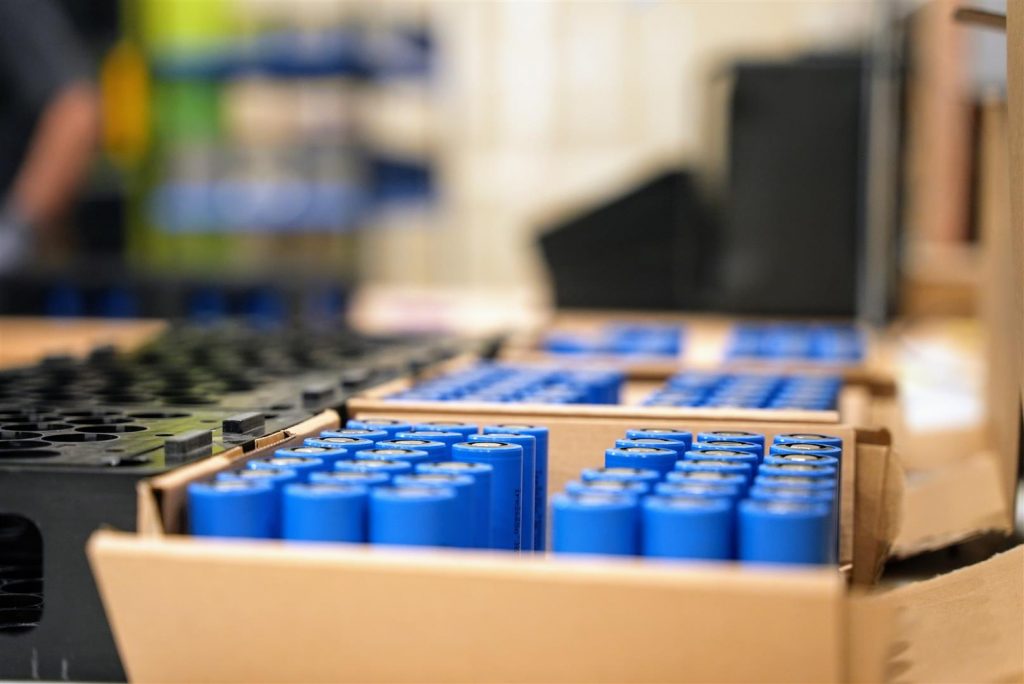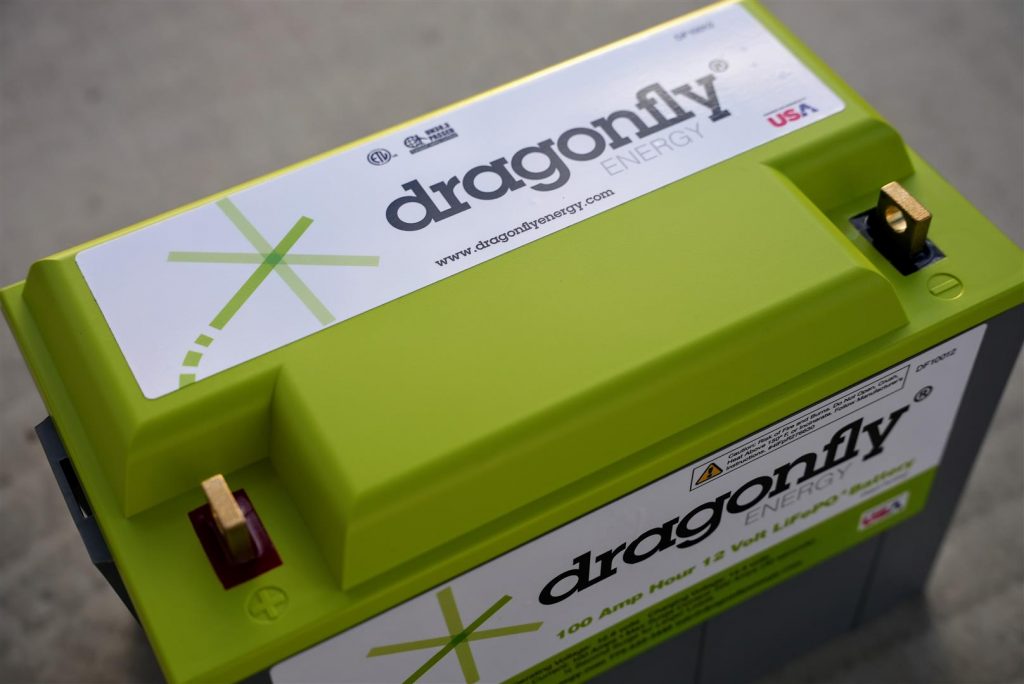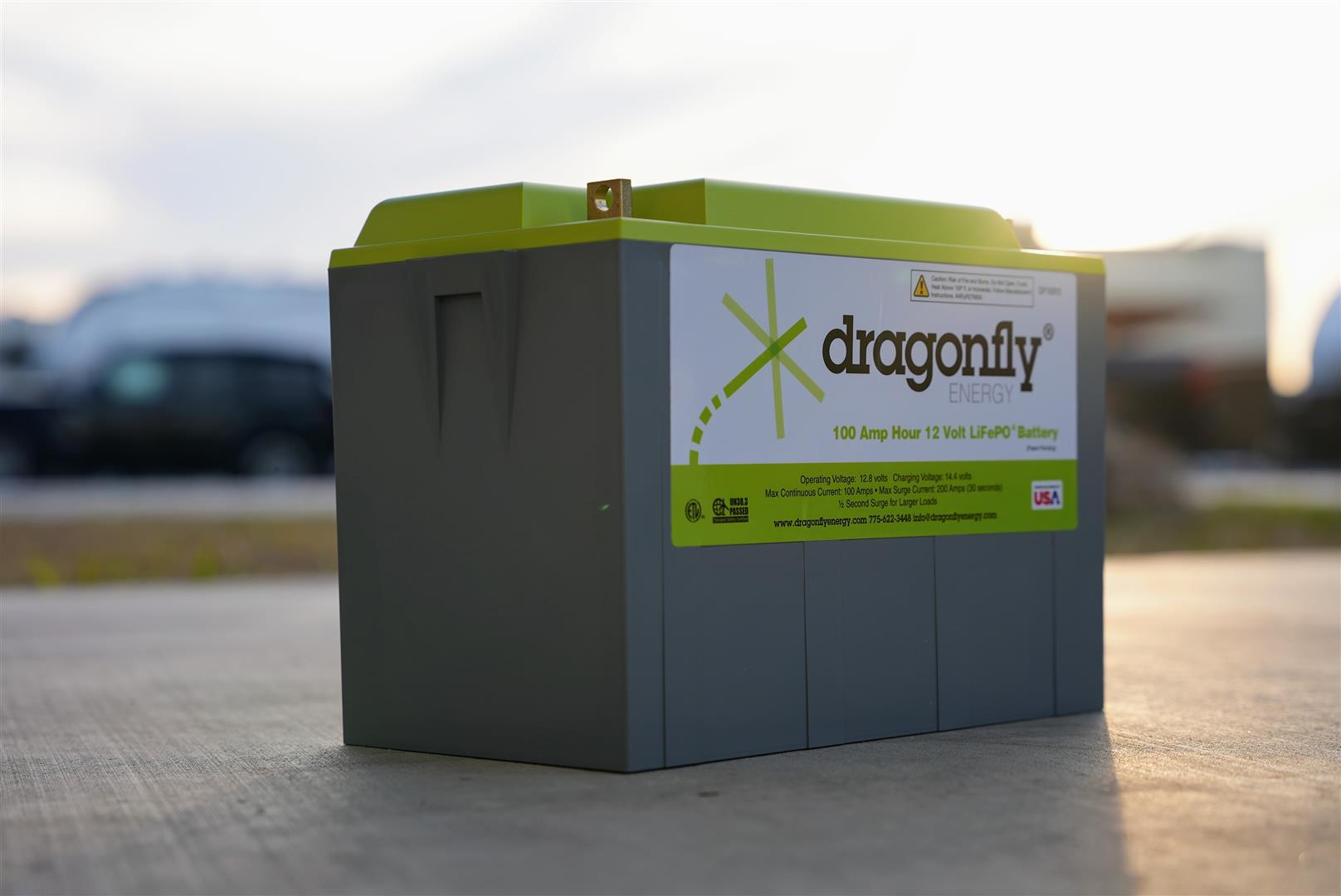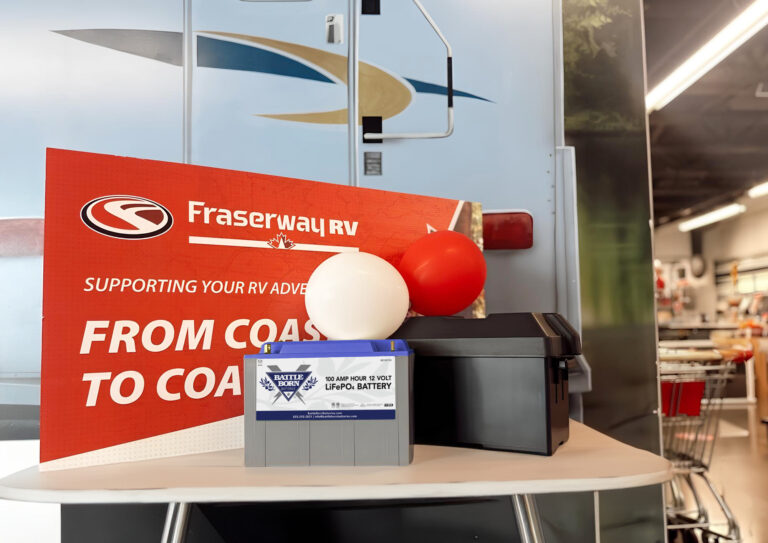Lithium-ion batteries are everywhere these days. They’re in your phone, your computer, and perhaps even your car or RV. But what is a lithium-ion battery? Furthermore, what’s inside of a lithium-ion battery that allows them to power your electronics? Let’s take a look!

What is A Lithium-Ion Battery?
Lithium-ion batteries use lithium ions to create an electrical potential between the positive and negative sides of the battery. A thin layer of insulating material called a “separator” sits between the two sides of the battery and allows the lithium ions to pass through while blocking the electrons.
While the battery charges, lithium ions move through the separator from the positive side to the negative. While the battery discharges, the ions move in the opposite direction.
The movement of the lithium ions causes an electrical potential difference called “voltage.” When you hook your electronic devices up to the battery, electrons (not lithium-ions) flow through your device and power it.
Lithium-Ion Battery Vs. Lithium-Ion Cell
Multiple lithium-ion cells connect internally to make up a lithium-ion battery. Think of lithium-ion cells as the building blocks that make up a full battery.
The voltage of a lithium-ion cell varies depending on the particular chemistry type. The nominal output voltage of a single lithium iron phosphate cell (the type used in Battle Born Batteries) ranges between 3.2 and 3.8 volts. However, the standard voltages for many lithium-ion batteries are 12, 24, and 48 volts.
When you connect cells in series, their voltages add together. For example, connecting four cells in series will yield a 12-volt battery. Wiring eight cells in series will produce a 24-volt battery, and so on.
Lithium-ion cells can also be connected in parallel. When you connect battery cells (and batteries) in parallel, their capacities add together. This means that two cells wired in parallel will last about twice as long as a single cell.

What’s Inside A Lithium-Ion Battery?
The inside of a lithium battery contains multiple lithium-ion cells (wired in series and parallel), the wires connecting the cells, and a battery management system, also known as a BMS.
The battery management system monitors the health and temperature of the battery. At the top of each charge, the BMS also balances the energy across all of the cells and helps ensure you get the maximum life and performance out of your lithium-ion battery.
What’s Inside A Lithium-Ion Cell
The inside of an individual lithium-ion cell is relatively simple. There are four main components: The anode, the cathode, an electrolyte, and a separator.
The Electrodes: Anode and Cathode
The negative electrode in a cell is called the anode. The positive side is called the cathode. During charging, the lithium ions move from the cathode, through the separator, to the anode. During discharge, the flow reverses.
The most popular material used for the anode is graphite. Common materials for the cathode are lithium cobalt oxide, lithium iron phosphate, and lithium manganese oxide. These different chemistries provide different benefits and voltages.
What Is Lithium-Ion Battery Electrolyte?
The role of the electrolyte inside of a lithium-ion battery is to help transport the positive lithium-ions between the anode and cathode. The most common electrolyte inside of a lithium-ion battery is a lithium salt.
What is a Separator?
Between the anode and cathode is the separator. The separator is a thin sheet of material that allows the lithium ions to pass through but doesn’t conduct electricity. It prevents the anode and cathode from shorting together electrically and forces the electrons to flow through your electronic device, giving it power.
The separator also plays an important safety role. If the separator gets too hot, the pores close and prevent the lithium ions from passing through. Stopping the transport of the ions shuts down the battery cell, which can help prevent damage to the battery or a fire.
How To Improve Lithium-Ion Batteries
Its easy to see how lithium-ion batteries have changed our world as they are used everywhere. They last much longer and store more energy than any previous battery type. However, this does not mean that manufacturers cannot improve these batteries.

Here at Dragonfly Energy, we assemble the highest quality energy storage lithium-ion batteries utilizing conventional cells. While this current technology is changing the energy storage world, we did not stop there. We are actively working on the next generation of lithium-ion technology.
From working on developing solid-state batteries that last longer and pack more energy to revolutionizing the manufacturing process our R&D team is looking to the future of energy storage.
You can learn more about our research on our Dragonfly technology page.
Simple on the Outside, Complex on the Inside!
A lithium-ion battery looks quite simple from the outside, but as you start to dig in, you will find many different components. Ultimately, lithium-ion energy storage is a chemistry-driven process that hinges on its namesake, the lithium-ion!



